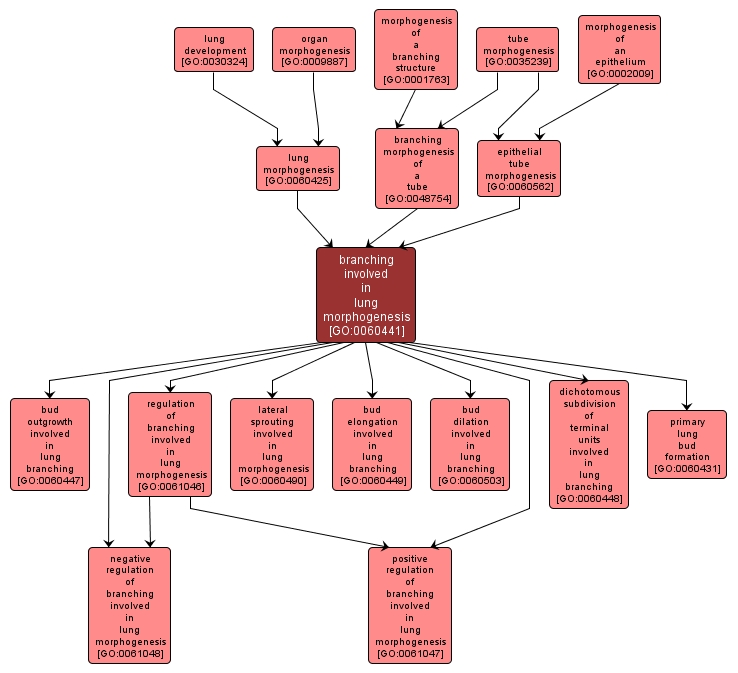GO TERM SUMMARY
|
| Name: |
branching involved in lung morphogenesis |
| Acc: |
GO:0060441 |
| Aspect: |
Biological Process |
| Desc: |
The process whereby a highly ordered sequence of patterning events generates the branched structures of the lung, consisting of reiterated combinations of bud outgrowth, elongation, and dichotomous subdivision of terminal units. |
Synonyms:
- lung branching morphogenesis
|
|

|
INTERACTIVE GO GRAPH
|














